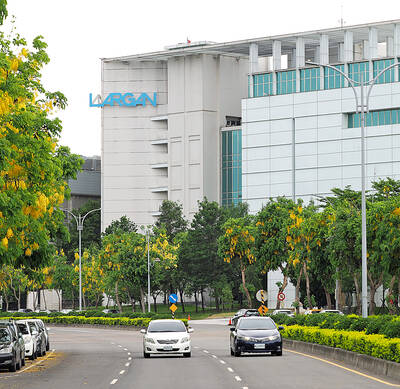The Ministry of Economic Affairs yesterday launched a Web site designed to provide easy access to information about the Triple Stimulus Vouchers.
The Web site, which can be accessed at 3000.gov.tw, provides detailed information about the vouchers in Chinese and English, the ministry said.
Part of the government’s plan to boost the local economy after the COVID-19 outbreak, the vouchers cost NT$1,000 and are worth NT$3,000.
All Taiwanese nationals and foreign spouses with resident certificates are eligible for the vouchers.
The vouchers can be ordered before their release from Wednesday next week to July 7 via the Web site.
The printed vouchers can then be collected from July 15 to July 31 at designated convenience stores by providing a National Health Insurance card, national identification card or resident certificate as proof of eligibility, the ministry said.
The NT$1,000 payment can be made online via the Web site or at the designated convenience stores.
People can also purchase the vouchers directly from any post office from July 15 onward by presenting one of the above-mentioned documents.
Those who want to redeem the vouchers through credit card purchases can set up their cards to do so from Wednesday next week onward through their card issuer.
People who spend NT$3,000 via credit card from July 15 to Dec. 31 would see a NT$2,000 reduction on their credit card bill, the ministry said.
The vouchers can also be redeemed using electronic tickets.
Similar to credit card holders, owners of electronic tickets can link their cards to the program through their card issuers from Wednesday next week.
After spending NT$3,000, they can get back NT$2,000 after swiping their cards at designated convenience stores, the ministry said, adding that notifications would be sent to those eligible via text message.
Lastly, the vouchers can also be redeemed through mobile payments.
Following the same rules as for credit card holders and electronic ticket users, mobile payment users can set up their preferred system online from Wednesday next week.

Taiwan’s foreign exchange reserves hit a record high at the end of last month, surpassing the US$600 billion mark for the first time, the central bank said yesterday. Last month, the country’s foreign exchange reserves rose US$5.51 billion from a month earlier to reach US$602.94 billion due to an increase in returns from the central bank’s portfolio management, the movement of other foreign currencies in the portfolio against the US dollar and the bank’s efforts to smooth the volatility of the New Taiwan dollar. Department of Foreign Exchange Director-General Eugene Tsai (蔡炯民)said a rate cut cycle launched by the US Federal Reserve

Handset camera lens maker Largan Precision Co (大立光) on Sunday reported a 6.71 percent year-on-year decline in revenue for the third quarter, despite revenue last month hitting the highest level in 11 months. Third-quarter revenue was NT$17.68 billion (US$581.2 million), compared with NT$18.95 billion a year earlier, the company said in a statement. The figure was in line with Yuanta Securities Investment Consulting Co’s (元大投顧) forecast of NT$17.9 billion, but missed the market consensus estimate of NT$18.97 billion. The third-quarter revenue was a 51.44 percent increase from NT$11.67 billion in the second quarter, as the quarter is usually the peak

Nvidia Corp’s major server production partner Hon Hai Precision Industry Co (鴻海精密) reported 10.99 percent year-on-year growth in quarterly sales, signaling healthy demand for artificial intelligence (AI) infrastructure. Revenue totaled NT$2.06 trillion (US$67.72 billion) in the last quarter, in line with analysts’ projections, a company statement said. On a quarterly basis, revenue was up 14.47 percent. Hon Hai’s businesses cover four primary product segments: cloud and networking, smart consumer electronics, computing, and components and other products. Last quarter, “cloud and networking products delivered strong growth, components and other products demonstrated significant growth, while smart consumer electronics and computing products slightly declined,” compared with the

The US government on Wednesday sanctioned more than two dozen companies in China, Turkey and the United Arab Emirates, including offshoots of a US chip firm, accusing the businesses of providing illicit support to Iran’s military or proxies. The US Department of Commerce included two subsidiaries of US-based chip distributor Arrow Electronics Inc (艾睿電子) on its so-called entity list published on the federal register for facilitating purchases by Iran’s proxies of US tech. Arrow spokesman John Hourigan said that the subsidiaries have been operating in full compliance with US export control regulations and his company is discussing with the US Bureau of